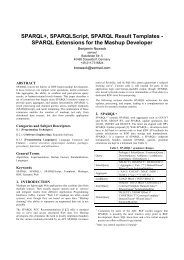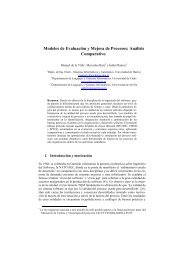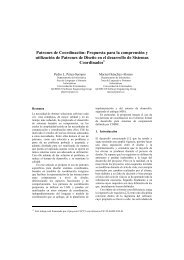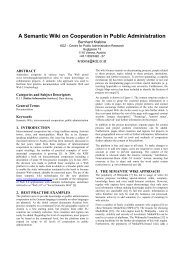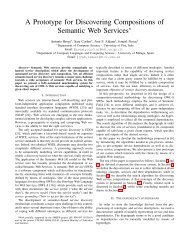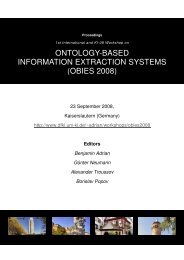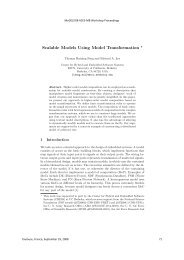Sim-Filter: User Profile based Smart Information Filtering and - FTP
Sim-Filter: User Profile based Smart Information Filtering and - FTP
Sim-Filter: User Profile based Smart Information Filtering and - FTP
Create successful ePaper yourself
Turn your PDF publications into a flip-book with our unique Google optimized e-Paper software.
capabilities. In this section, we present first the smartcard technology <strong>and</strong> then the<br />
implementation of user profile in Java smartcard.<br />
3.1 <strong>Smart</strong>card Technology<br />
A smartcard as represented in Fig. 3. contains most of classic computer components,<br />
i.e. a CPU, a ROM (storing operating system code), a RAM (dedicated to stack<br />
operations), a persistent EEPROM memory (storing java byte code or user data), a<br />
communication bus, <strong>and</strong> a way to communicate with the outside world via an<br />
Input/Output connector. Silicon technology has considerably reduced the transistor<br />
size for smartcards to reach 0.18-micron process thus enabling important integration<br />
progress. The CPU of current smartcards is a 32-bit microprocessor with a processing<br />
power of 33 MIPS (Million Instructions Per Second) at a frequency of 33MHz.<br />
32<br />
bits<br />
Proc.<br />
I/O Connector Security Bloc<br />
Bus<br />
ROM 256KB RAM 4 KB EEPROM 64 KB<br />
Fig. 3. <strong>Smart</strong>card global architecture<br />
The smartcard components need 50µs to process a cryptographic DES algorithm<br />
<strong>and</strong> only 200ms are necessary to compute a 1,024-bit RSA signature. As mentioned in<br />
[17] crypto-coprocessors could be replaced by dedicated cryptographic instruction in<br />
CPU cores. Memory capacities range from 128 to 256Ko of ROM, from 64 to 128Ko<br />
of EEPROM <strong>and</strong> from 4 to 8Ko of RAM. Writing data in EEPROM is relatively slow.<br />
It takes 1ms to write a 32 or a 64-bits word <strong>and</strong> it can be done only one million of<br />
times. The performance of smartcard’s components will be a key issue in a closed<br />
future, as it could allow smartcards to be considered as the most secure<br />
communicating object on the Internet. <strong>Smart</strong>card’s capabilities are drastically limited<br />
due to its size. Fortunately, this will evolve rapidly. <strong>Smart</strong>cards with memories of few<br />
megabytes have been announced for 2003. Access to those memories is also a<br />
problem that will no longer exist with new memories such as FeRAM (10 9 writing<br />
operations allowed, memory capacity around one megabyte <strong>and</strong> writing delay less<br />
than 200ns). Processors frequency will probably progress according to the Moore law.<br />
One of the major chip manufacturers foresaw that the CPU would only occupy 10%<br />
of the area on the next generation of chip leaving more space for bigger Non Volatile<br />
Memory. Finally, one could expect secure dies with computing performances around<br />
200 MIPS <strong>and</strong> memory capacities about 1 Mb, at the horizon of 2005's.



